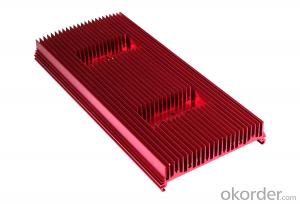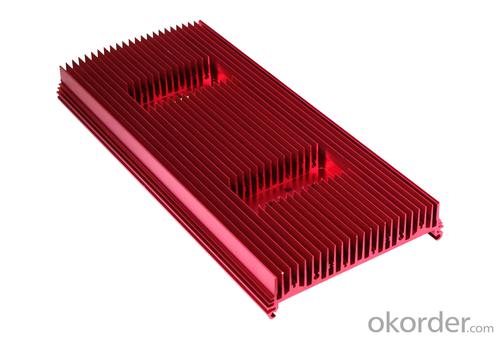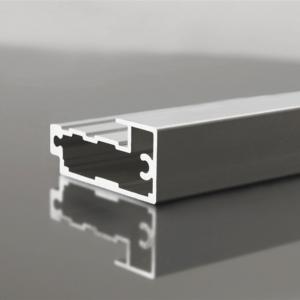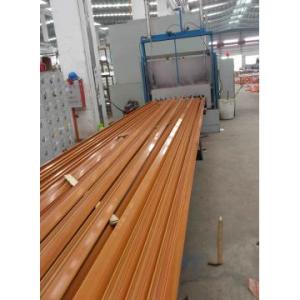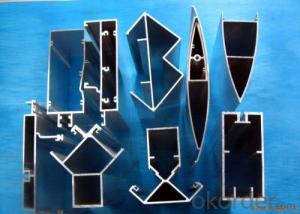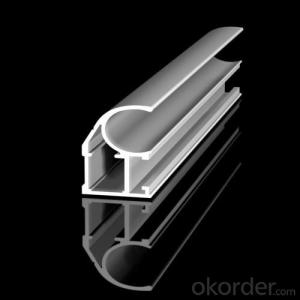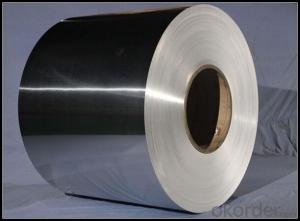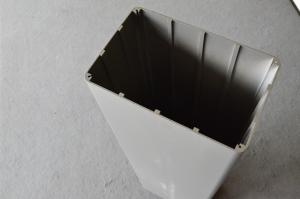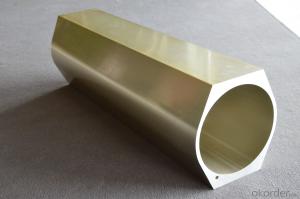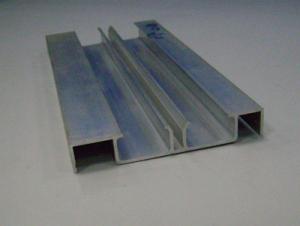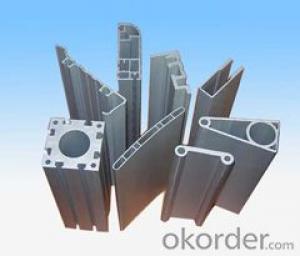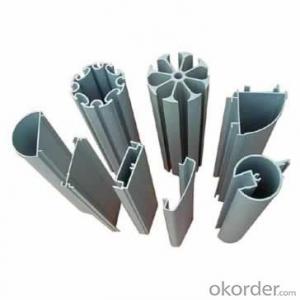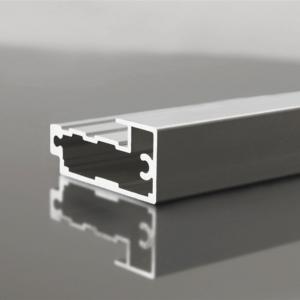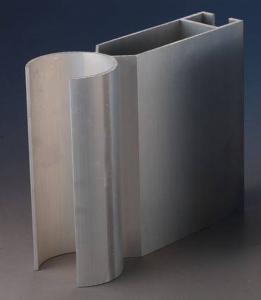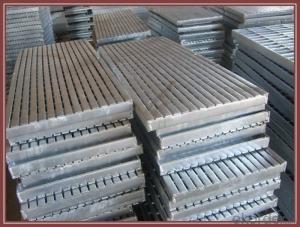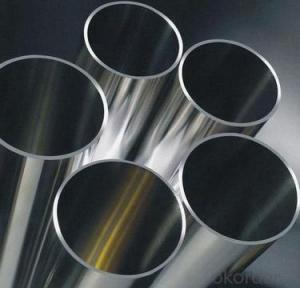Aluminum Extrusion Profiles New York - Aluminum Sections 002
- Loading Port:
- China Main Port
- Payment Terms:
- TT OR LC
- Min Order Qty:
- -
- Supply Capability:
- -
OKorder Service Pledge
OKorder Financial Service
You Might Also Like
Industrial aluminium profile
1)Material : 6063 6061 6060 and different aluminium alloy
2)Status:T4 T5 T6 or other special status
3)Surface treatment: mill finish, anodized sliver ,anodized bronze, anodized champagne, anodized black pearl, various power coating color, electrostatic sliver, electrostatic champagne, electrostatic golden, electrostatic titanium , machine polish sliver, machine polish bronze, wooden grain color, and Fluorocarbon spraying.
4)Annual capacity : 120000TON
5)Quality : China Nation Standard GB/T 5237 2008 (advanced class)
6)Use: can be widely using aluminium window, door, curtain wall, hand railing , normal aluminium profile, decorative and industrial aluminium profile
7)Advantage: Famous Brand reasonable&market price, soonest delivery and good after sale- service
8)Type of package:protection foam+heat contracted plastic film. / wooden packing / Metal pallet or depand on clientspecial requirement.
9)Payment term:T/T:30% of total value as deposite should paid by T/T within 3 days when confirmation ,and the remaining sum should be paid by T/T before delivery.L/C: 100% at sight
10)Delivery Day: 15-30days
11)Honor : CHINA FAMOUS TRADEMARK, CHINA TOP BRAND, ISO9001-2000, CHINA SQUARE&ROUND COMMITTEE DNV
- Q: Are aluminum profiles suitable for use in exterior insulation systems?
- <p>Yes, aluminum profiles can be used for exterior insulation systems. They offer high strength, durability, and resistance to weathering, making them ideal for external applications. Aluminum profiles are lightweight, easy to install, and can be used to create a robust framework for insulating materials, enhancing the energy efficiency and thermal performance of buildings.</p>
- Q: Household aluminum profiles, which brand of cost-effective? Recommend!
- China's well-known aluminum alloy profiles manufacturing enterprisesChina top ten aluminum profile list / famous brand aluminum alloy profiles1 China Aluminum Group (central management of large state-owned enterprises)The 2 Asia Aluminum Group (Asia's largest aluminum producer, Chinese brand)3 Southwest Aluminum Group ()4 Nanshan aluminum (China famous brand, China well-known trademark, national inspection free products)5 South South aluminum (China well-known trademark)6 BTL Baotou aluminum (China famous brand)7 Zhong Wang aluminum profile (China famous brand, China well-known trademark, national inspection free products)8 (China Jianmei aluminium profile brand, national Mianjian products)9 South Asia Aluminum Profile (China famous brand, national inspection free products)10 Feng aluminum (national Mianjian products)The brands above are all very good...
- Q: This question asks for guidance on selecting the appropriate aluminum profiles for a construction project.
- <p>Choosing the right aluminum profiles for your building project involves several steps. First, consider the specific requirements of your project, such as load-bearing capacity, aesthetic preferences, and environmental conditions. Consult with engineers or architects to determine the appropriate strength, size, and shape of the profiles. Next, evaluate the quality of the aluminum, ensuring it meets industry standards for durability and resistance to corrosion. Look for profiles with good thermal insulation properties and UV resistance to maintain performance over time. Finally, consider the cost-effectiveness and availability of the profiles, as well as the ease of installation and maintenance. Always opt for reputable suppliers to ensure you receive high-quality products that meet your project's needs.</p>
- Q: Is there any health risk linked to the use of aluminum profiles in construction?
- <p>There are minimal health risks associated with using aluminum profiles in construction. Aluminum is a non-toxic metal and does not emit harmful substances. However, during the manufacturing process, if not properly controlled, there might be exposure to dust or fumes which could be harmful if inhaled. Additionally, aluminum dust can cause skin irritation. It's important to handle aluminum profiles with care and use appropriate safety measures, such as wearing masks and gloves, to minimize any potential health risks.</p>
- Q: Can aluminum profiles be used in the construction of modular buildings?
- Yes, aluminum profiles can be used in the construction of modular buildings. Aluminum profiles are lightweight, yet strong and durable, making them an ideal material for modular construction. They can be easily fabricated and joined together, allowing for flexibility in design and construction. Additionally, aluminum profiles have excellent corrosion resistance, which is crucial for modular buildings that may be exposed to various weather conditions. The use of aluminum profiles in modular construction can also contribute to sustainability, as aluminum is a highly recyclable material. Overall, aluminum profiles offer numerous advantages for the construction of modular buildings, making them a popular choice in the industry.
- Q: What are the different surface sandblasting options for aluminum profiles?
- Aluminum profiles offer various options for surface sandblasting, each with its own distinctive finish and level of abrasiveness. 1. For a polished or satin appearance, fine sandblasting delicately eliminates surface imperfections, creating a smooth finish on the aluminum profile. This method employs fine-grain sand or abrasive materials. 2. To achieve a rugged texture, coarse sandblasting employs larger-grain sand or abrasives, providing a matte or textured finish on the aluminum surface. This option effectively conceals scratches and blemishes. 3. Glass bead blasting involves propelling small glass beads at high speed onto the aluminum profile's surface. This technique ensures a uniform and visually pleasing matte finish, often desired for its reflectivity. 4. Walnut shell blasting, a gentler approach compared to traditional sandblasting, utilizes ground walnut shells as the blasting media. This technique is suitable for delicate aluminum profiles, effectively removing contaminants and providing a clean, smooth finish. 5. Shot peening is a specialized sandblasting process that involves bombarding the aluminum profile with small metal shots or pellets. Primarily utilized to enhance strength and resistance to fatigue, shot peening focuses on improving the aluminum surface's durability rather than altering its appearance. Considering the specific requirements and desired outcome is crucial when selecting a surface sandblasting option for aluminum profiles. Consulting with professionals in the field can help determine the most suitable method based on the desired finish, level of abrasiveness, and the properties of the aluminum profile.
- Q: Are aluminum profiles suitable for solar panel frames?
- Yes, aluminum profiles are highly suitable for solar panel frames. Aluminum is a lightweight yet strong material, making it an ideal choice for constructing solar panel frames. It offers excellent corrosion resistance, which is crucial for outdoor applications, ensuring the longevity and durability of the frames. Additionally, aluminum profiles can be easily shaped and formed, allowing for flexible and customizable designs to accommodate different solar panel sizes and configurations. Furthermore, aluminum is a highly sustainable material as it is 100% recyclable, aligning with the environmentally-friendly nature of solar energy. Overall, the use of aluminum profiles for solar panel frames provides numerous advantages such as strength, durability, corrosion resistance, flexibility, and sustainability, making it a highly suitable choice.
- Q: Are aluminum profiles suitable for railway and transportation systems?
- Railway and transportation systems can greatly benefit from the use of aluminum profiles. Aluminum, being both lightweight and strong, is an ideal material for applications that demand a high strength-to-weight ratio, such as the construction of railway and transportation systems. One of the main advantages of utilizing aluminum profiles in these systems is their exceptional resistance to corrosion. Aluminum naturally forms a protective oxide layer on its surface, which effectively prevents rusting and corrosion, even in harsh environmental conditions. Consequently, this ensures the longevity and durability of the railway and transportation systems, thereby reducing maintenance requirements and costs. Furthermore, aluminum profiles offer great design flexibility. They can be effortlessly fabricated into various shapes and sizes, allowing for customization to meet the specific requirements of railway and transportation systems. This versatility allows for the creation of lightweight yet sturdy structures that can withstand the dynamic loads and vibrations experienced in transportation applications. Another advantage of aluminum profiles is their recyclability. Aluminum is one of the most recyclable materials, boasting a high recycling rate. This makes it an eco-friendly choice for railway and transportation systems, aligning with sustainable practices. Moreover, aluminum profiles possess excellent electrical conductivity and thermal properties. This makes them suitable for applications that necessitate efficient heat dissipation, electromagnetic shielding, or electrical connections in railway and transportation systems. To summarize, due to their lightweight nature, strength, corrosion resistance, design flexibility, recyclability, and electrical and thermal properties, aluminum profiles are highly suitable for railway and transportation systems. These characteristics make aluminum an ideal material for constructing transportation infrastructure that is both durable and efficient, while also being environmentally friendly.
- Q: This question asks for methods to protect aluminum profiles from damage during the processes of transportation and storage.
- <p>To prevent damage to aluminum profiles during transportation and storage, follow these practices: Use protective packaging such as bubble wrap or foam padding to cushion the profiles. Ensure that profiles are stacked evenly and securely to avoid pressure points. Store profiles in a dry, cool place away from direct sunlight and moisture to prevent warping or corrosion. Secure the cargo during transportation to prevent shifting, and handle with care to avoid dropping or mishandling. Regularly inspect storage areas for potential hazards like pests or leaks that could cause damage.</p>
- Q: This question asks for guidance on selecting suitable aluminum profiles for a construction project.
- <p>To choose the right aluminum profiles for your building project, consider the following: 1. Load-bearing capacity: Select profiles that can withstand the weight and stress of your structure. 2. Application: Choose profiles suitable for the specific application, such as window frames, curtain walls, or support beams. 3. Aesthetics: Opt for profiles that match your project's design and architectural style. 4. Durability: Look for high-quality aluminum with good corrosion resistance and weather resistance. 5. Cost: Compare prices and choose profiles that offer the best value for money. 6. Supplier reputation: Work with reputable suppliers known for quality products and reliable service. Consult with engineers or architects to ensure you select the most appropriate profiles for your project's needs.</p>
Send your message to us
Aluminum Extrusion Profiles New York - Aluminum Sections 002
- Loading Port:
- China Main Port
- Payment Terms:
- TT OR LC
- Min Order Qty:
- -
- Supply Capability:
- -
OKorder Service Pledge
OKorder Financial Service
Similar products
Hot products
Hot Searches
Related keywords
